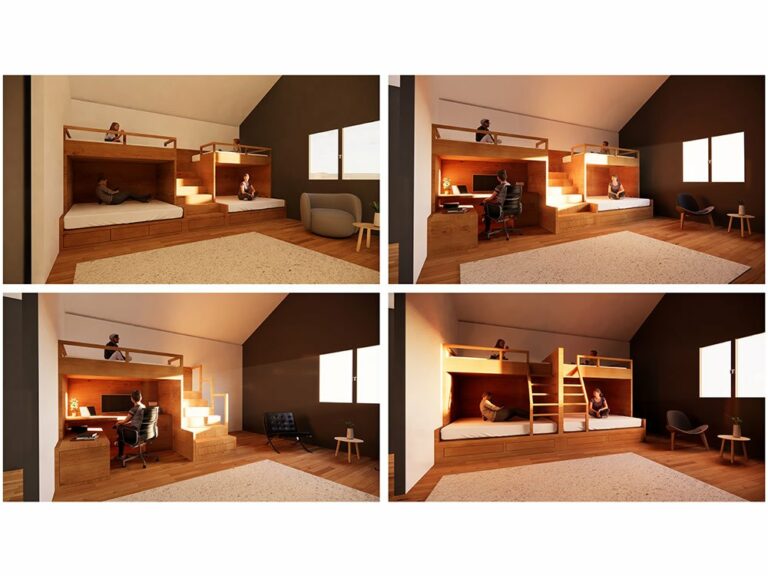Eco-Friendly Furniture Options For Sensory Processing Issues
Today we discuss Eco-Friendly Furniture Options For Sensory Processing Issues. Are there any environmentally friendly furniture options suitable for individuals with sensory processing challenges? Yes, indeed!
We have gathered information on eco-friendly furniture that prioritizes comfort and sustainability for those facing sensory processing difficulties. Finding furniture that meets these criteria can be a daunting task, but worry not! We have conducted thorough research and are excited to share our discoveries with you.
This article will delve into the innovative solutions tailored to the specific requirements of individuals with sensory processing challenges, all while considering the well-being of our planet. Let’s embark on a journey to explore the realm of eco-conscious furniture crafted for sensory well-being.
Eco-Friendly Furniture Options For Sensory Processing Issues:
Living sustainably is crucial for many people, who are making conscious choices like reducing carbon footprints and recycling. But individuals with sensory issues encounter challenges in finding suitable furniture. Fortunately, there are eco-friendly furniture options that meet their needs. This article discusses furniture designed for people with sensory issues, focusing on sustainability and environmental awareness.
The Impact of Sensory Processing Issues:
Sensory processing disorder (SPD) can affect people of all ages, causing challenges in processing sensory information. This includes sight, sound, touch, taste, and smell, impacting various aspects of daily life, including furniture choices like chairs, beds, and sofas.
Eco-friendly Furniture Materials:
Eco-friendly materials are crucial for individuals with sensory processing issues when choosing furniture. Some materials can worsen sensitivities, while others offer comfort and relief. Here are common eco-friendly materials used in sensory-friendly furniture:
1. Organic Cotton:
Organic cotton is a sustainable alternative to conventional cotton. It is grown using methods that avoid synthetic pesticides and fertilizers, making it safer for both the environment and individuals with sensitivities. Organic cotton is often used in upholstery, pillows, and other fabric-based furniture items.
2. Natural Latex:
Natural latex, derived from rubber trees, is a hypoallergenic and sustainable material that provides excellent support and comfort. It is often used in mattresses and cushions, offering individuals with sensory processing issues a comfortable and safe place to relax.
3. Bamboo:
Bamboo is a fast-growing and renewable resource that can be used to create sturdy furniture pieces. It is an eco-friendly alternative to traditional woods like oak or mahogany. Bamboo furniture can be an excellent option for those with sensory sensitivities as it is lightweight, durable, and easy to clean.
4. Wool:
Wool is a natural and renewable material known for its softness and insulation properties. It can be used in upholstery, rugs, and cushions, providing both comfort and sensory-friendly benefits. Wool is also flame-resistant and resistant to dust mites, making it a suitable choice for individuals with allergies or sensitivities.
Sensory-friendly Furniture Designs:
In addition to eco-friendly materials, furniture designed specifically for sensory processing issues can greatly enhance the overall comfort and well-being of individuals. These designs often incorporate features that accommodate sensory sensitivities. Here are some popular sensory-friendly furniture designs:
1. Deep Pressure Furniture:
Deep-pressure furniture, such as weighted blankets, vests, or compression chairs, applies gentle pressure to the body, creating a calming and soothing effect. This type of furniture can provide comfort and alleviate anxiety for individuals with sensory processing issues.
2. Sensory-friendly Seating:
Sensory-friendly seating options often prioritize comfort and provide additional support for individuals with sensory needs. Features like adjustable headrests, lumbar support, and customizable reclining positions allow users to find their optimal sensory experience.
3. Noise-reducing Furniture:
Noise-reducing furniture can help individuals with sensory sensitivities by minimizing external sounds and vibrations. For example, soundproof bookshelves or acoustic panels can be incorporated into furniture designs to create a quieter and more peaceful environment.
4. Multi-sensory Furniture:
Multi-sensory furniture combines various sensory elements to provide a holistic and engaging experience. This type of furniture may incorporate features like built-in sound systems, adjustable lighting, or textured surfaces, allowing individuals to engage and explore their senses in a controlled manner.
Maintaining Sustainability in Furniture Production:
While it is important to consider the needs of individuals with sensory processing issues, it is equally crucial to ensure that eco-friendly practices are followed throughout the furniture production cycle. Here are some ways furniture manufacturers can maintain sustainability:
1. Use of Recycled Materials:
Furniture manufacturers can incorporate recycled materials, such as reclaimed wood or recycled plastic, into their products. This reduces the demand for new raw materials and minimizes environmental impact.
2. Sustainable Manufacturing Processes:
Adopting sustainable manufacturing processes, such as using energy-efficient machinery, reducing water consumption, and implementing waste management strategies, helps minimize the ecological footprint of furniture production.
3. Responsible Sourcing:
Furniture companies can prioritize responsible sourcing by ensuring their suppliers adhere to sustainable practices. This includes sourcing wood from certified sustainable forests and supporting fair trade initiatives.
4. Longevity and Durability:
Creating furniture that is built to last promotes sustainability by reducing the need for frequent replacements. Manufacturers can achieve this by using high-quality materials and employing skilled craftsmanship.
Tips for Choosing Eco-friendly Furniture for Sensory Processing Issues:
Here are some tips to consider when selecting eco-friendly furniture for individuals with sensory processing issues:
1. Research and Read Reviews:
Before purchasing eco-friendly furniture, conduct thorough research and read reviews to ensure that the specific product meets the sensory needs of the individual.
2. Test the Furniture:
Whenever possible, try out the furniture in person to assess comfort, support, and sensory features. This can be particularly important for individuals with specific sensory preferences or sensitivities.
3. Seek Expert Advice:
Consult with occupational therapists or other professionals experienced in working with sensory processing issues for recommendations on suitable eco-friendly furniture.
4. Prioritize Safety:
Ensure that the chosen furniture meets safety standards and does not contain any harmful chemicals or allergens that could trigger sensitivities.
Faqs for Eco-Friendly Furniture Options For Sensory Processing Issues:
Examples of eco-friendly furniture suitable for individuals with sensory processing issues include recliners with built-in massage and heating functions, ergonomic chairs with adjustable lumbar support, memory foam mattresses made from organic materials, and sofas upholstered with low-VOC fabrics.
You can find eco-friendly furniture options for individuals with sensory processing issues at various retailers and online stores. Look for specialty furniture stores that cater to sensory needs or eco-friendly brands known for their sustainable practices.
Some online marketplaces also offer a wide range of eco-friendly furniture. Make sure to check product descriptions and customer reviews to ensure that the furniture meets both eco-friendly and sensory needs.
When considering eco-friendly furniture for sensory processing needs, it’s important to evaluate certain factors. Pay attention to the specific features and design elements that address your sensory needs, such as adjustable height, soft textures, or supportive cushions.
Yes, some eco-friendly furniture options for sensory processing issues can be personalized or customized to better suit individual needs. Many retailers offer customization options such as choosing specific fabrics, colors, or additional features to accommodate sensory preferences. Some manufacturers also provide the option to tailor the furniture’s dimensions or adjustability. It’s worth exploring these possibilities to ensure maximum comfort and sensory regulation.
While eco-friendly furniture options may sometimes carry a higher price tag compared to conventional furniture, it’s important to consider the long-term benefits and value they provide. Investing in eco-friendly furniture can contribute to a healthier environment, as well as supporting brands that prioritize sustainable practices.
Final Thoughts
there are eco-friendly furniture options available for individuals with sensory processing issues. These furniture options are designed to consider the specific needs and sensitivities of individuals with sensory processing issues, while also being environmentally friendly. By using sustainable materials and incorporating elements such as ergonomic design and sensory-friendly features, these furniture options can provide a comfortable and supportive environment for individuals with sensory processing issues. Investing in eco-friendly furniture not only benefits the individual’s well-being but also contributes to a greener and more sustainable future for all.




